Coenzyme Q10 is not equally well absorbed from all supplements. Some commercially available CoQ10 supplements give a better absorption; some give very little absorption. The formulation of the CoQ10 supplement is decisive. It is important to find a CoQ10 preparation for which scientific documentation of absorption is at hand.
Why is CoQ10 absorption difficult?
Problem number one: The CoQ10 raw material consists of crystalline powder.
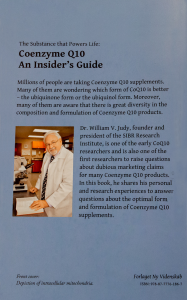
In his book Coenzyme Q10: An Insider’s Guide, Dr. William Judy goes into detail about the absorption and bioavailability of CoQ10 supplements. The book is available from amazon.com. ISBN: 978-87-7776-186-7.
The human body cannot absorb these CoQ10 crystals. The CoQ10 supplement manufacturers must find a way to dissolve the CoQ10 crystals to single CoQ10 molecules and must find a way to keep the CoQ10 crystals dissolved at body temperature.
This is not an easy task, as the melting point of the CoQ10 crystals is approximately 10 degrees Celsius above human body temperature. Many CoQ10 products have CoQ10 crystals in the capsules at room temperature. Depending upon their shape and the extent of their surface area, these CoQ10 crystals will have difficulty in dissolving to single CoQ10 molecules in the stomach and small intestines [Judy 2018].
Problem number two: The environment of the small intestines is a watery environment.
Coenzyme Q10 molecules are fat-soluble; to move through the small intestines to the intestinal absorption cells (the enterocytes), the CoQ10 molecules need the help of bile acids and pancreatic secretions that pack the CoQ10 molecules into mixed micelles together with fatty substances from meals [Judy 2018]. The micelles move the CoQ10 molecules close to the villi of the intestinal absorption cells; there, the micelles break up, releasing the CoQ10 molecules for possible absorption.
Note: Typically, five to ten percent of the ingested Coenzyme Q10 will be packed into micelles and will be absorbed. That leaves approximately 90-95 percent of the ingested Coenzyme Q10 to be eliminated in the fecal excretion [Judy 2018].
Note: CoQ10 absorption is improved if the CoQ10 supplement is taken together with a meal containing some fat; peanut butter and yogurt are good in this regard [Langsjoen 1994; Bhagavan 2007].
Problem number three: The CoQ10 molecules are too big and have a long side-chain.
The CoQ10 molecules are so large that they cannot be absorbed directly into the blood from the absorption cells in the small intestines. In the small intestine absorption cells, the absorbed CoQ10 molecules need to be incorporated into chylomicrons to pass from the intestinal absorption cells into the lymph. In the lymph, the Coenzyme Q10 slowly moves to the blood circulation. Typically, the absorbed Coenzyme Q10 will result in a peak concentration in the plasma (the Cmax) about six hours after ingestion (the Tmax) [Judy 2018].
Absorption of Coenzyme Q10 as Ubiquinone or Ubiquinol

In a double-blind crossover study with a minimum of a four-week washout between intakes, Prof. G. Lopez-Lluch has tested the bioavailability of seven different CoQ10 supplement formulations containing 100 mg of CoQ10 in 14 young, healthy individuals.
There are many misleading marketing claims for ubiquinol absorption [Judy 2021 Dec]. Please be aware that the current state of CoQ10 research shows that the proper formulation of the CoQ10 supplement is much more important for CoQ10 absorption than is the form of the Coenzyme Q10, i.e., whether the form is ubiquinol or ubiquinone. In a head-to-head comparison study using the same study participants, a well-formulated ubiquinone CoQ10 supplement has given better absorption and bioavailability than a ubiquinol supplement [Lopez-Lluch 2019].
Evidence from large dog studies has shown the following progression of ingested ubiquinol [Judy 2021 Oct]:
- ingested as ubiquinol
- converted to ubiquinone in the small intestines
- absorbed as ubiquinone
- converted back to the ubiquinol form in the lymph
- transferred into the blood circulation in the form of ubiquinol
Note: That Coenzyme Q10 is predominantly in the ubiquinol form in the lymph and the blood makes sense because there is not a big need for ATP energy generation in these compartments. Instead, there is a need for antioxidant protection of the lipoproteins in the plasma [Judy 2021 Oct]. In the heart muscle cells, however, there will be a need for Coenzyme Q10 in the ubiquinone form to generate ATP energy [Mortensen 2014].
The ubiquinone form of Coenzyme Q10 – the oxidized form – is an essential component of the ATP energy process in the cells; ubiquinol – the reduced form – is valuable as a fat-soluble antioxidant [Judy 2021 Oct].
Conclusion: Coenzyme Q10 Absorption and Bioavailability
- Supplementation with the ubiquinone form of Coenzyme Q10 will result in significant increases in the ubiquinol content in the plasma and in the lipoproteins [Mohr 1992].
- Moreover, the body contains as many as five known enzyme systems to convert ubiquinone to ubiquinol as needed. It is not necessary to take a ubiquinol supplement to get enough ubiquinol [Mantle & Dybring 2020].
- It is not necessary to take a ubiquinol supplement to get enough ubiquinol.
- It is advisable to shop carefully for a CoQ10 supplement with proven absorption and bioavailability.
Sources
Bhagavan HN, Chopra RK, Craft NE, Chitchumroonchokchai C, Failla ML. Assessment of coenzyme Q10 absorption using an in vitro digestion-Caco-2 cell model. Int J Pharm. 2007 Mar 21;333(1-2):112-7.
Judy WV. Coenzyme Q10: An Insider’s Guide. 2018. ISBN: 978-87-7776-186-7. Available from amazon.com.
Judy WV. The Instability of the lipid-soluble antioxidant ubiquinol: part 2-dog studies. Integr Med (Encinitas). 2021 Oct;20(5):26-30.
Judy WV. The Instability of the lipid-soluble antioxidant ubiquinol: part 3-misleading marketing claims. Integr Med (Encinitas). 2021 Dec;20(6):24-28.
Langsjoen H, Langsjoen P, Willis R, Folkers K. Usefulness of Coenzyme Q10 in clinical cardiology: a long-term study. Mol Aspects Med. 1994;15s s165-s175.
Mantle D, Dybring A. Bioavailability of Coenzyme Q10: An Overview of the Absorption Process and Subsequent Metabolism. Antioxidants (Basel). 2020 May 5;9(5):386.
Mohr D, Bowry VW, Stocker R. Dietary supplementation with coenzyme Q10 results in increased levels of ubiquinol-10 within circulating lipoproteins and increased resistance of human low-density lipoprotein to the initiation of lipid peroxidation. Biochim Biophys Acta. 1992 Jun 26;1126(3):247-54.
Mortensen SA, Rosenfeldt F, Kumar A, Dolliner P, Filipiak KJ, Pella D, Alehagen U, Steurer G, Littarru GP; Q-SYMBIO Study Investigators. The effect of coenzyme Q10 on morbidity and mortality in chronic heart failure: results from Q-SYMBIO: a randomized double-blind trial. JACC Heart Fail. 2014 Dec;2(6):641-9.
The information presented in this review article should not be used as medical advice.
15 October 2022



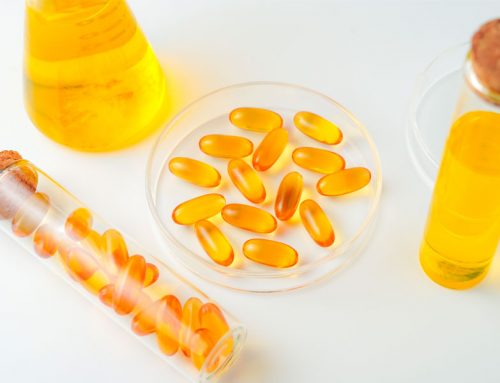
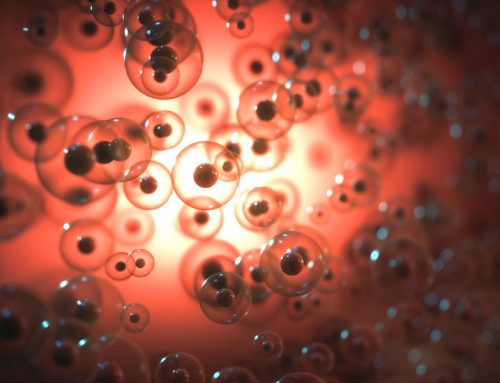
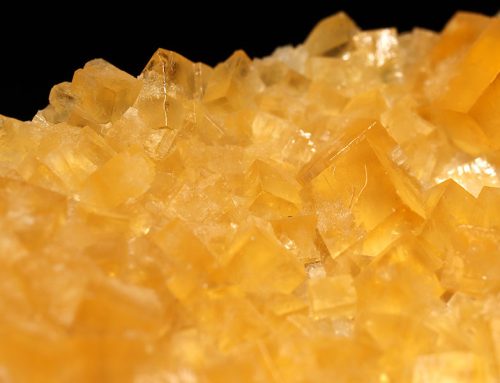
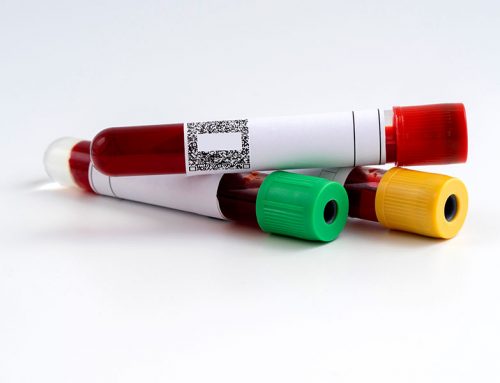
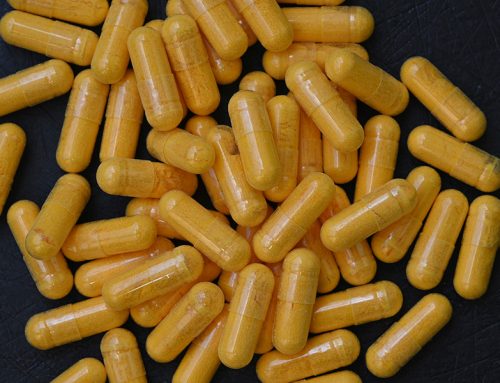
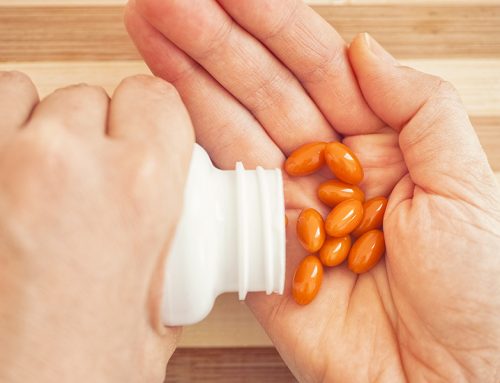
Leave A Comment